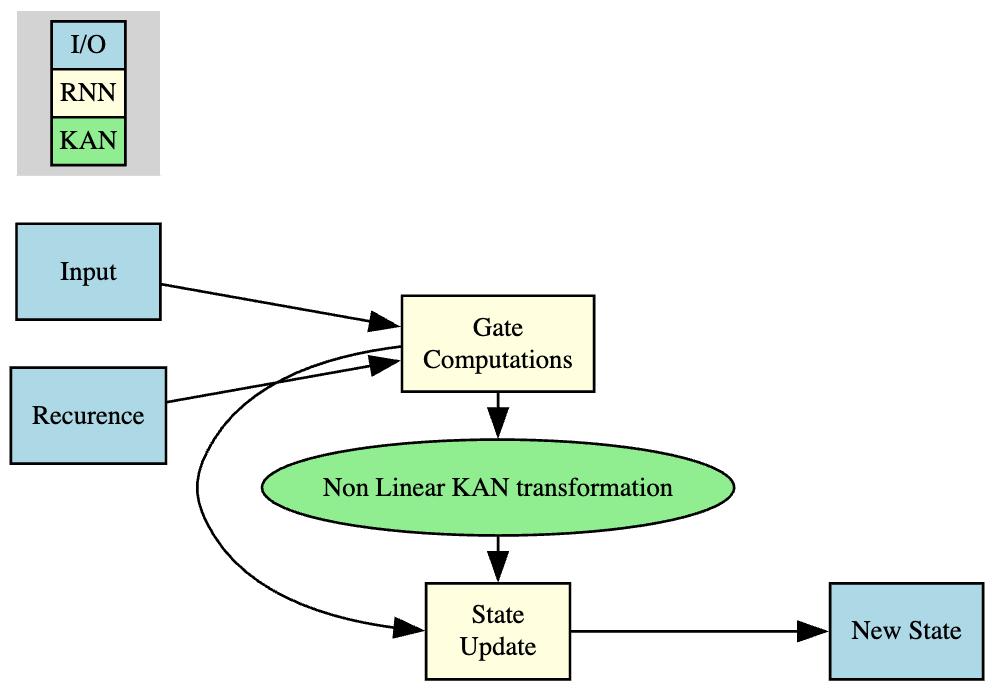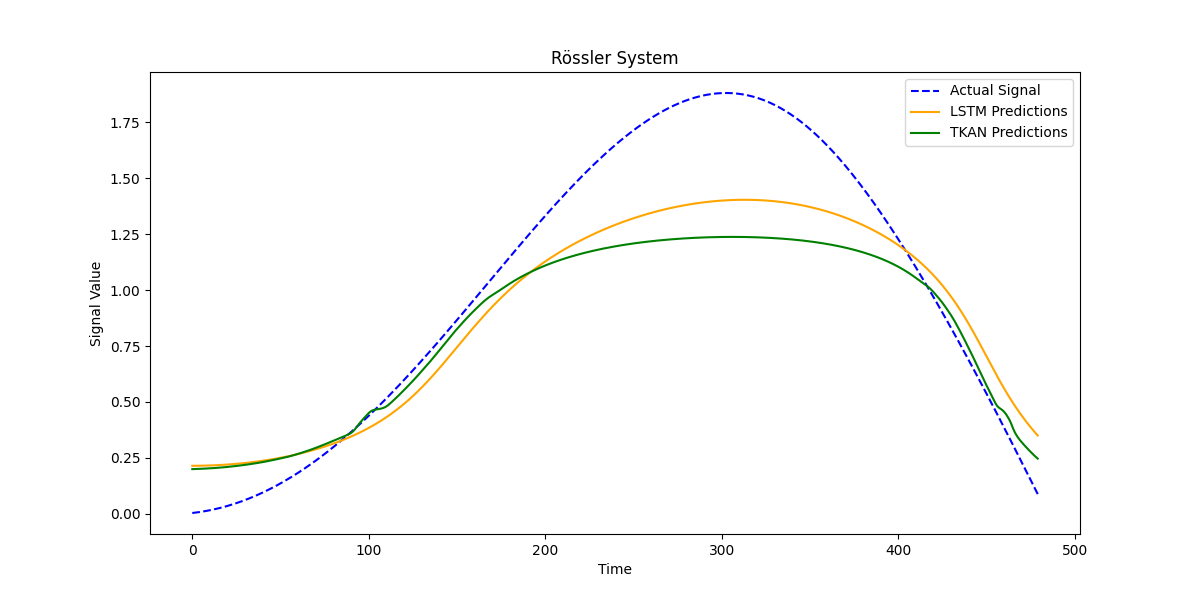Introduction§
TimeKAN is a Python library that implements Kolmogorov-Arnold Networks (KAN) with recurrent neural network architectures in Pytorch. Currently, it still in experimental stage but with careful training it can perform quite well on some time series tasks.

In tKANLSTM, KAN layers replace the output gate, computing \(o_t = \sigma(\text{KAN}(W_x x_t + W_h h_{t-1}))\). In tKANGRU, they form the candidate hidden state, \(\tilde{h}_t = \tanh(\text{KAN}(W_x x_t + W_h (r_t \odot h_{t-1})))\). The layer basis functions can be Fourier series, Chebyshev polynomials, or splines.
Here’s how it can perform on Rossler system signal:

The table below compares TimeKAN (using tKANLSTM and spline as basic functions) and a standard bidirectional LSTM on three chaotic datasets available in timekan.utils.datasets. Metrics include Mean Absolute Error (MAE) and training time (seconds) until convergence.
Dataset |
Model |
MAE |
Training Time (s) |
|---|---|---|---|
Mackey-Glass |
LSTM |
0.0893 |
0.3346 |
TimeKAN |
0.0822 |
9.8755 |
|
Lorenz |
LSTM |
0.9410 |
1.1331 |
TimeKAN |
0.7485 |
7.9437 |
|
Rössler |
LSTM |
0.3332 |
1.3951 |
TimeKAN |
0.2657 |
12.4172 |